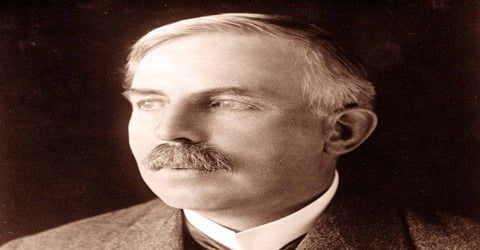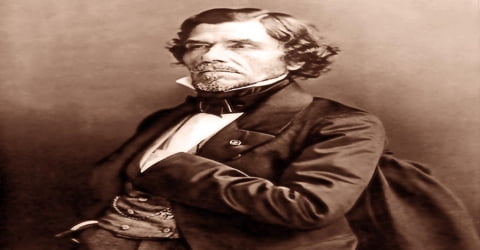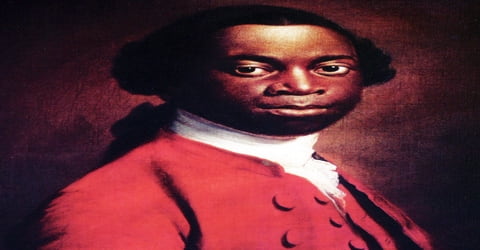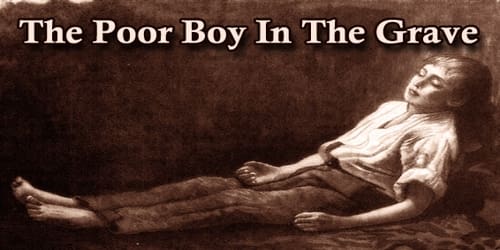Biography of Ernest Rutherford
Ernest Rutherford – New Zealand-born British Chemist and physicist.
Name: Ernest Rutherford
Date of Birth: 30 August 1871
Place of Birth: Brightwater, New Zealand
Date of Death: 19 October 1937 (aged 66)
Place of Death: Cambridge, England
Spouse/Ex-: Mary Georgina Newton (m. 1900–1937)
Father: James Rutherford
Mother: Martha Thompson
Children: Eileen Mary
Fields: Physics and Chemistry
Early Life
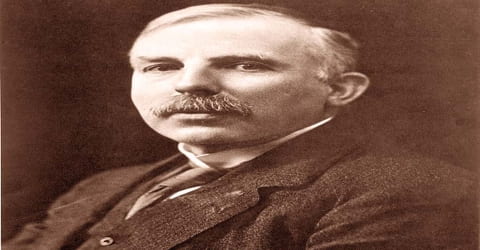
Ernest Rutherford was the first man to split an atom, transmuting one element into another. He performed experiments on radioactivity and is widely regarded as the Father of Nuclear Physics or Father of the Nuclear Age. He was born on 30 August 1871 at Spring Grove, New Zealand to James Rutherford, a Scottish emigrant farmer and Martha Thompson, an English emigrant schoolteacher. He was the fourth of a dozen children and the second son.
He studied at Havelock School and then Nelson College and won a scholarship to study at Canterbury College, University of New Zealand, where he participated in the debating society and played rugby. After gaining his BA, MA and BSc, and doing two years of research during which he invented a new form of radio receiver, in 1895 Rutherford was awarded an 1851 Research Fellowship from the Royal Commission for the Exhibition of 1851, to travel to England for postgraduate study at the Cavendish Laboratory, University of Cambridge. He was among the first of the ‘aliens’ (those without a Cambridge degree) allowed to do research at the university, under the inspiring leadership of J. J. Thomson, which aroused jealousies from the more conservative members of the Cavendish fraternity.
In early work, Rutherford discovered the concept of radioactive half-life, the radioactive element radon, and differentiated and named alpha and beta radiation. This work was performed at McGill University in Canada. It is the basis for the Nobel Prize in Chemistry he was awarded in 1908 “for his investigations into the disintegration of the elements, and the chemistry of radioactive substances”, for which he was the first Canadian and Oceanian Nobel laureate.
He also identified and named the Alpha and Beta radiations. He named the Gamma rays as well. The Rutherford model of the atom was introduced when he theorized that atoms have their charge concentrated in a very small nucleus. He conducted experiments that resulted in the first ‘splitting’ of the atom in 1917; during the process, he discovered and named the proton. Under his supervision as the Director of the Cavendish Laboratory at the University of Cambridge, his associate James Chadwick proved his theorization of neutrons and soon after, the first experiment to split the nucleus in a fully controlled manner was conducted by his students, John Cockcroft, and Ernest Walton. He was admitted to the Order of Merit in 1925 and was raised to the peerage as Lord Rutherford of Nelson in 1931. The chemical element 104 – Rutherfordium has been named after him.
He won the Nobel Prize for Chemistry in 1908, was president of the Royal Society (1925–30) and the British Association for the Advancement of Science (1923), was conferred the Order of Merit in 1925, and was raised to the peerage as Lord Rutherford of Nelson in 1931.
Childhood, Family and Educational Life

Ernest Rutherford, in full Ernest Rutherford, Baron Rutherford of Nelson, of Cambridge, was born August 30, 1871; Spring Grove, New Zealand to James Rutherford, a Scottish emigrant farmer and Martha Thompson, an English emigrant schoolteacher. He was the fourth of a dozen children and the second son. His first name was mistakenly spelled ‘Earnest’ when his birth was registered.
His father, James, had little education and struggled to support the large family on a flax-miller’s income. Ernest’s mother, Martha, worked as a schoolteacher. She believed that knowledge was power, and placed a strong emphasis on her children’s education. As a child, Ernest, whose family called him “Ern,” spent most of his time after school milking cows and helping with other chores on the family farm. Weekends were spent swimming in the creek with his brothers. Since money was tight, Rutherford found inventive ways of overcoming his family’s financial challenges, including birds-nesting to earn funds for his kite-flying supplies. “We haven’t the money, so we’ve got to think,” was Rutherford’s motto at the time.
Ernest Rutherford attended the Free State schools through 1886 when he won a scholarship to attend Nelson Collegiate School, a private secondary school. He excelled in nearly every subject, but especially in mathematics and science. Later in 1889, he won a University scholarship and joined Canterbury College, University of New Zealand, Wellington. He was a bright student and took interest in debates and rugby.
In 1893, he received a double first M.A. degree in Mathematics and Physical Science. Thereafter, he carried on his research work at the college for a brief period of time before receiving his B.Sc. degree in 1894.
In 1894, he also received an ‘1851 Research Fellowship’ from the ‘Royal Commission for the Exhibition of 1851’ that helped him to pursue post-graduate studies as a research scholar under J.J. Thomson at the Cavendish Laboratory, University of Cambridge.
Personal Life
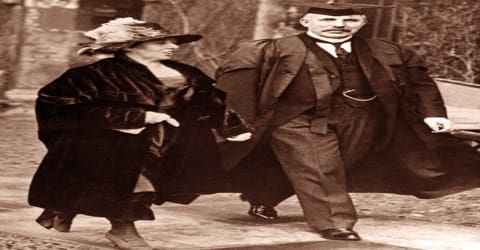
(Sir Ernest Rutherford and his wife Mary Newton at Trinity College in Cambridge (1921))
In 1900, Rutherford married Mary Georgina Newton, only daughter of Arthur and Mary de Renzy Newton. The couple had a daughter, Eileen Mary who married British physicist and astronomer, Ralph Fowler.
His favorite hobbies were golf and motoring.
He was politically liberal but not politically active, although he did chair the advisory council of the government’s Department of Scientific and Industrial Research and was president (from 1933 until his death) of the Academic Assistance Council (and its successor organization, the Society for the Protection of Science and Learning), an organization designed to aid scientists who had fled Nazi Germany. In 1931 he was made a peer, but any gratification this honor may have brought was marred by the death of his daughter just eight days before.
Career and Works
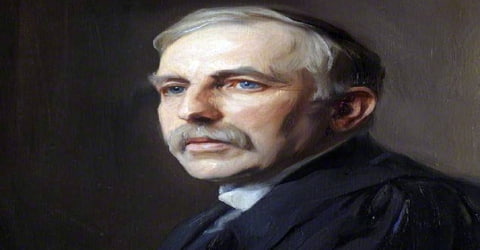
In 1895, as the first research student at the University of Cambridge’s Cavendish Laboratory in London, Rutherford identified a simpler and more commercially viable means of detecting radio waves that had been previously established by German physicist Heinrich Hertz.
In 1864 the Scottish physicist James Clerk Maxwell had predicted the existence of such waves, and between 1885 and 1889 the German physicist Heinrich Hertz had detected them in experiments in his laboratory. Rutherford’s apparatus for detecting electromagnetic waves, or radio waves, was simpler and had commercial potential. He spent the next year in the Cavendish Laboratory increasing the range and sensitivity of his device, which could receive signals from half a mile away. However, Rutherford lacked the intercontinental vision and entrepreneurial skills of the Italian inventor Guglielmo Marconi, who invented the wireless telegraph in 1896. In 1897, he received his B.A. Research Degree and the Coutts-Trotter Studentship of Trinity College.
In 1898, Thomson recommended Rutherford for a position at McGill University in Montreal, Canada. He was to replace Hugh Longbourne Callendar who held the chair of Macdonald Professor of physics and was coming to Cambridge. Two years later in 1900, he received a D.Sc degree from the University of New Zealand.
Also while at Cavendish Laboratory, Rutherford was invited by Professor J.J. Thomson to collaborate on a study of X-rays. German physicist Wilhelm Conrad Röntgen had discovered X-rays just months before Rutherford arrived at Cavendish, and X-rays were a hot topic among research scientists. Together, Rutherford and Thomson studied the effects of X-rays on the conductivity of gases, resulting in a paper about dividing atoms and molecules into ions. While Thomson went on to examine what would later be called an electron, Rutherford took a closer look at ion-producing radiations.
Focusing on uranium, Rutherford discovered that placing it near foil resulted in one type of radiation being easily soaked up or blocked, while a different type had no trouble penetrating the same foil. He labeled the two radiation types “alpha” and “beta.” As it turns out, the alpha particle was identical to the nucleus of a helium atom. The beta particle was, in fact, the same as an electron or positron.
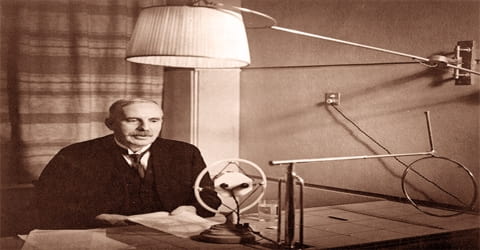
In 1901, he gained a DSc from the University of New Zealand. In 1907, Rutherford returned to Britain to take the chair of physics at the Victoria University of Manchester.
In 1909, in collaboration with Hans Geiger and Ernest Marsden, Ernest Rutherford conducted the Geiger–Marsden experiment, which established the nuclear nature of atoms by deflecting alpha particles passing through a thin gold foil.
In 1919, he succeeded Sir Joseph Thomson as the Cavendish Professor of Physics at Cambridge. He also eventually became Chairman of the Advisory Council, H.M. Government, Department of Scientific and Industrial Research; Professor of Natural Philosophy, Royal Institution, London; and Director of the Royal Society Mond Laboratory, Cambridge.
With the advent of World War I, Rutherford turned his attention to antisubmarine research. By 1919 he had made another monumental discovery: how to artificially induce a nuclear reaction in a stable element. Nuclear reactions were Rutherford’s main focus for the rest of his scientific career.
In 1919, he also became the first person to transform one element into another. In the experiment, he used alpha radiation to convert nitrogen into oxygen. In the products of the reaction, he observed and brought forth a new particle called proton in 1920.
He also named the particle neutron during the Bakerian Lecture of 1920 and the following year, he theorized its existence in association with Niels Bohr. Years later in 1932, the theory was proved right by his associate James Chadwick, who received the Nobel Prize in Physics (1935) for this breakthrough. Apart from Chadwick, he also guided other scientists like Blackett, Cockcroft, and Walton to their Nobel Prize win; Nobel laureates like G.P. Thomson, Appleton, Powell, and Aston researched with him for some time.
In 1925, he urged the Government of New Zealand to support education and research; this resulted in the formation of the Department of Scientific and Industrial Research (DSIR) in 1926. Between 1925 and 1930, he was the President of the Royal Society, and later President of the Academic Assistance Council which assisted nearly 1,000 university refugees from Germany.
He was appointed to the Order of Merit in the 1925 New Year Honours and raised to the peerage as Baron Rutherford of Nelson, of Cambridge in the County of Cambridge in 1931, a title that became extinct upon his unexpected death in 1937. In 1933, Rutherford was one of the two inaugural recipients of the T. K. Sidey Medal, set up by the Royal Society of New Zealand as an award for outstanding scientific research.
He published several successful books like ‘Radioactivity’ (1904); ‘Radioactive Transformations’ (1906); ‘Radiation from Radioactive Substances’, with James Chadwick and C.D. Ellis (1919, 1930); and ‘The Electrical Structure of Matter’ (1926).
Awards and Honor

Nobel Prize in Chemistry (1908) “for his investigations into the disintegration of the elements, and the chemistry of radioactive substances” – Affiliated with Victoria University, Manchester, United Kingdom
Knighted (1914)
Ennobled (1931)
President of the Institute of Physics (1931)
After the war, Rutherford succeeded his mentor J. J. Thomson in the Cavendish Professorship at Cambridge
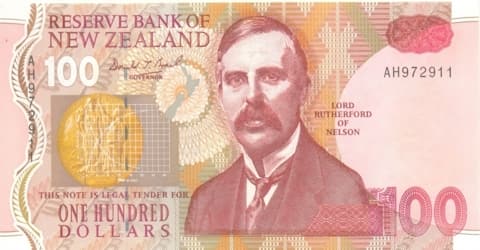
(Rutherford on the New Zealand 100-dollar banknote)
Element 104, rutherfordium, is named in his honor
Received several honorary fellowships and degrees
Death and Legacy
On October 19, 1937, Baron Rutherford died in Cambridge, England at age 66 from the complications of a strangulated hernia. The scientist, who had been nicknamed “Crocodile” by his colleagues for always looking ahead, was buried at Westminster Abbey.
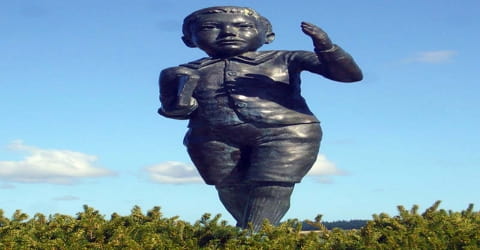
(A statue of a young Ernest Rutherford at his memorial in Brightwater, New Zealand.)
Years before he died, during World War I, Rutherford said he hoped scientists would not learn how to extract atomic energy until “man was living at peace with his neighbors.” The discovery of nuclear fission was, in fact, made just two years after his death, and eventually resulted in what Rutherford had feared the use of nuclear power to build wartime weapons.
For some time before his death, Rutherford had a small hernia, which he had neglected to have fixed, and it became strangulated, causing him to be violently ill. Despite an emergency operation in London, he died four days afterward of what physicians termed “intestinal paralysis”, at Cambridge. After cremation at Golders Green Crematorium, he was given the high honor of burial in Westminster Abbey, near Isaac Newton and other illustrious British scientists.
Information Source:
